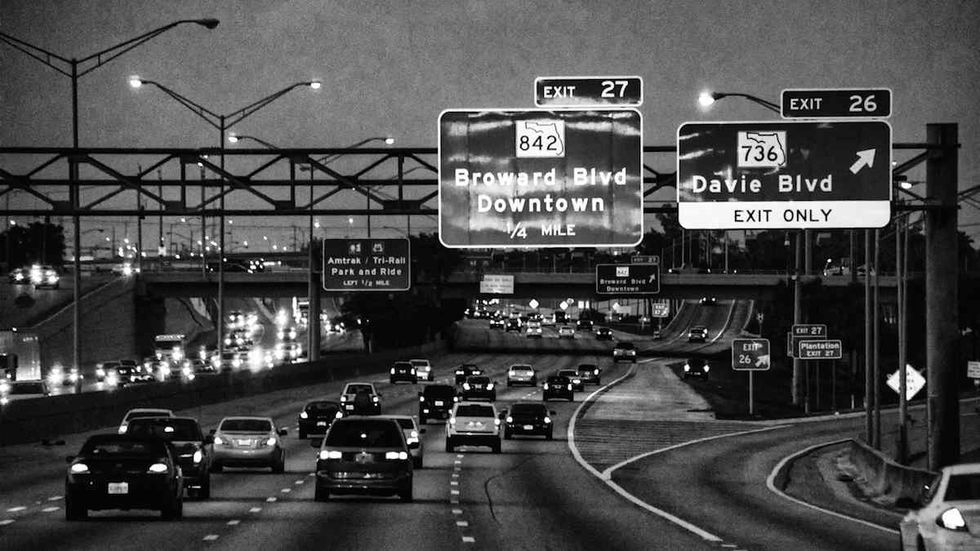
© 2025 Blaze Media LLC. All rights reserved.
Most people look to the holiday season as a time for helping: a time for giving. Congress is in the giving spirit, too. In fact, Congress just gift-wrapped a five-year, 1,300-page transportation bill, the “Fixing America’s Surface Transportation Act (or FAST Act)” that only a liberal president would put on his wish list. The bill spends billions of dollars, reauthorizes the Export-Import Bank (see crony capitalism), while paying for it all with phony spending offsets.
In most recent years, Congress has provided roughly $50 billion in highway spending per year. By this measure, the FAST act is a large spending increase. In the very first year alone, the highway bill increases spending by $2.1 billion, eventually increasing it by $6.1 billion in the final year of the bill—or more than $12 billion in new spending over the five years.
Aside from the federal government taking an ever-larger role in transportation, a function that should be left to the states, this bill is a budget buster. In total, the bill provides $280 billion for the highway trust fund, plus a $25 billion from the general account at the Treasury, for a total of $305 billion. In total, $70 billion will be transferred from the general account into the highway trust fund, a bailout that is a mere drop in the long history of highway trust fund bailouts, which have already totaled more than $73 billion since 2008.
As it is, the highway trust fund is bankrupt. The main funding mechanism, the gas tax, only raises about $35 billion per year. Yet, Congress has been adamantly spending much more. As a result, the highway trust fund is running negative cash balances indefinitely (see graph).
GRAPH HERE
The Republican majority is making the case that much of the new spending is offset, but there is just one problem: most of the offsets are phony.
The Republicans’ persistence in increasing spending is one thing, but using fake offsets to pay for that spending is simply fraudulent. And this bill is full of fake offsets.
The largest offset comes from Congress meddling in the Federal Reserves balance sheet, skimming from the central bank roughly $20 - $53 billion, depending on how the Congressional Budget Office interprets the legislative text. This Federal Reserve account is considered a “rainy-day” fund, used to shore up any imbalances the Fed may be facing. Without this account, any losses the bank must cover will now be the taxpayer’s liability. This brings us to a rare moment where I’ll agree with the Fed’s own statement on the matter: “Using resources of the Federal Reserve to finance fiscal spending sets a bad precedent,” and “it infringes on the independence of the central bank and weakens fiscal discipline.” When the Federal Reserve, of all places, is chastising Congress for weakening fiscal discipline, you know you’ve got a problem.
The next “offset” the bill creates is from selling oil from the Strategic Petroleum Reserve. There are just a few problems with this. First, this pay-for was recently used to raise $5 billion as a down payment for new spending in the Bipartisan Budget Act of 2015. But even more troubling, the cash Congress is predicting to raise will likely never materialize. For starters, Congress is estimating the money raised from the sale of oil at $90 per barrel. However, oil currently sells for as low as $40 per barrel. Welcome to Congressional math.
Finally, the bill includes a number of other budget gimmicks. It would attempt to raise $7 billion by reducing the amount of dividends the Federal Reserve pays to its largest member banks who own shares of the Fed’s regional banks. The bill also “raises” money by confiscating passports of delinquent taxpayers and increasing Customs and Border Protection fees.
All that being said, the bill is 1,300 pages—long enough that most members of Congress will never read it in its entirety. But most importantly, the official score keeper, the Congressional Budget Office, has yet to release the details of how much this bill will actually cost the American taxpayer. At Conservative Review, we’ll keep reading the bill and will update our readers as more information is made available. Stay tuned!
#mc_embed_signup{background:#fff; clear:left; font:14px}
/* Add your own MailChimp form style overrides in your site stylesheet or in this style block.
We recommend moving this block and the preceding CSS link to the HEAD of your HTML file. */
Want to leave a tip?
We answer to you. Help keep our content free of advertisers and big tech censorship by leaving a tip today.
Want to join the conversation?
Already a subscriber?
more stories
Sign up for the Blaze newsletter
By signing up, you agree to our Privacy Policy and Terms of Use, and agree to receive content that may sometimes include advertisements. You may opt out at any time.
Related Content
© 2025 Blaze Media LLC. All rights reserved.
Get the stories that matter most delivered directly to your inbox.
By signing up, you agree to our Privacy Policy and Terms of Use, and agree to receive content that may sometimes include advertisements. You may opt out at any time.






